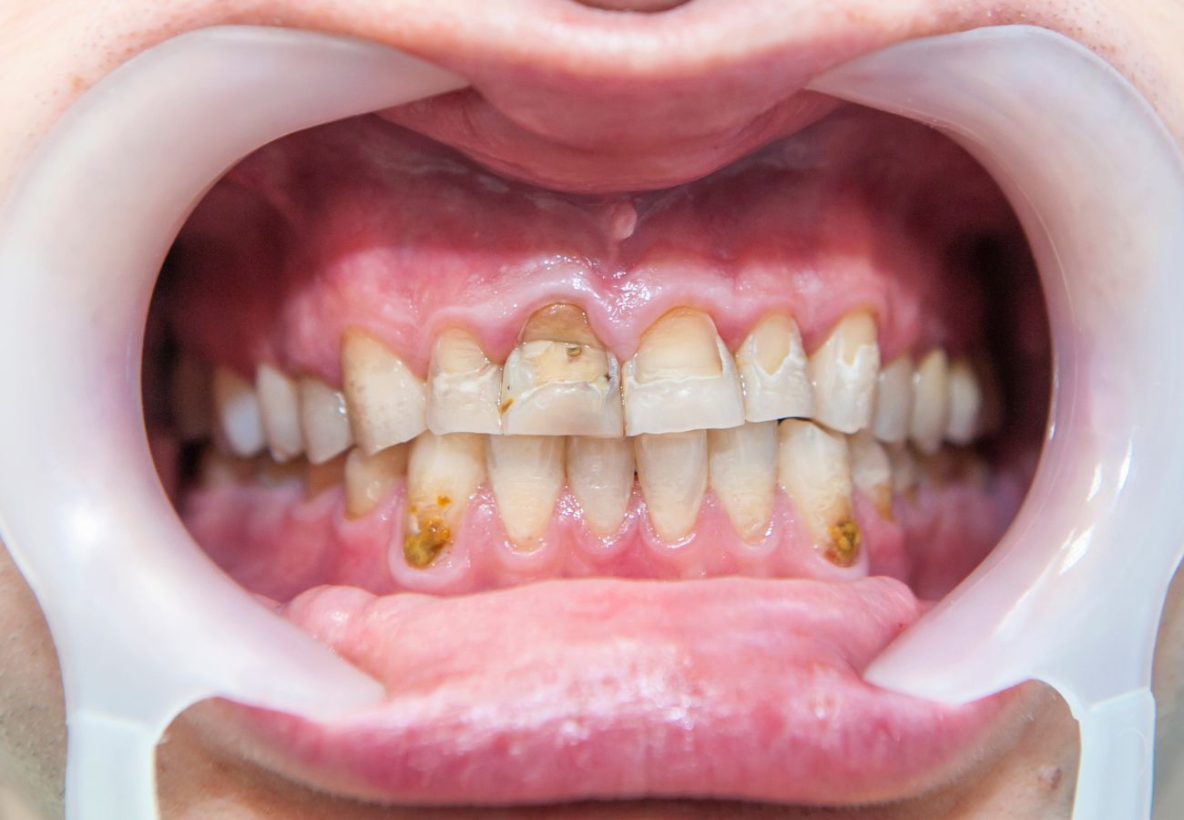Fluorosis is a dental condition that occurs when the teeth are exposed to excessive amounts of fluoride during their development. While fluoride is essential for strengthening teeth and preventing cavities, an overabundance of it can lead to cosmetic and structural issues. Let’s get into the details of fluorosis, its causes, symptoms, prevention, and potential treatments.
What is Fluorosis?
Natural Mineral and Dental Health
Fluoride, a naturally occurring mineral, has long been recognized for its ability to strengthen tooth enamel and make teeth more resistant to acid attacks. This mineral is commonly found in water, soil, and various foods.
Excess Fluoride and Dental Issues
Fluorosis occurs when developing teeth are exposed to too much fluoride. The excessive fluoride disrupts the enamel formation process, resulting in a range of cosmetic and structural problems.
Types of Fluorosis
Dental Fluorosis
Dental fluorosis primarily affects the appearance of teeth. It is characterized by subtle to noticeable white streaks or brown spots on the enamel. In severe cases, the enamel may develop pits and craters.
Skeletal Fluorosis
Skeletal fluorosis is a more severe condition that affects the bones and joints. It is usually caused by long-term exposure to high levels of fluoride and is prevalent in areas with naturally occurring high fluoride content in water sources.
Causes of Fluorosis
Fluoridated Water
Fluoridated water is a common source of fluoride exposure. While controlled fluoridation helps prevent tooth decay, excessive consumption, especially during tooth development, can contribute to fluorosis.
Fluoride Toothpaste
Using fluoride toothpaste is essential for maintaining oral health. However, young children who swallow toothpaste instead of spitting it out can ingest more fluoride than their developing teeth can tolerate.
Dietary Sources
Certain foods and beverages, such as tea and processed foods made with fluoridated water, can contribute to fluoride intake. Ensuring a balanced diet and being mindful of fluoride-rich items can help prevent excessive exposure.
Signs and Symptoms
Dental Discoloration
The primary sign of fluorosis is dental discolouration. Mild cases may result in barely noticeable white lines or specks, while severe cases can lead to dark brown stains.
Surface Irregularities
Fluorosis can cause enamel to become porous, resulting in surface irregularities that make the teeth appear pitted or grooved.
Impact on Tooth Enamel
The structural integrity of tooth enamel can be compromised, leading to increased susceptibility to cavities and other dental issues.
Diagnosis and Assessment
Visual Examination
Dentists can often diagnose fluorosis through a visual examination of the teeth, assessing their colour, texture, and overall appearance.
Dental X-rays
X-rays can help dentists determine the extent of fluorosis and identify any potential complications.
Preventing Fluorosis
Monitoring Fluoride Intake
Monitoring fluoride intake is crucial, especially for young children. Ensuring they use an appropriate amount of fluoride toothpaste and limiting fluoridated water consumption can help prevent fluorosis.
Using Fluoride-free Toothpaste
For children under six years old, using fluoride-free toothpaste reduces the risk of excessive fluoride ingestion.
Balanced Diet
Maintaining a balanced diet rich in calcium and other essential minerals can help offset the effects of fluoride and promote healthy tooth development.
Treating Fluorosis
Microabrasion
Microabrasion is a minimally invasive procedure that involves removing a thin layer of enamel to improve the appearance of teeth affected by mild fluorosis.
Teeth Whitening
Professional teeth whitening treatments can effectively reduce the visibility of stains caused by fluorosis.
Dental Bonding
Dental bonding involves applying a tooth-coloured resin to the enamel, effectively covering up surface irregularities and stains.
Promoting Dental Health
Regular Dental Check-ups
Regular visits to the dentist enable early detection and intervention, ensuring optimal dental health.
Oral Hygiene Practices
Practicing good oral hygiene, including regular brushing, flossing, and rinsing, helps maintain strong teeth and reduces the risk of dental issues.
FAQs about Fluorosis
What causes dental fluorosis?
Dental fluorosis is caused by excessive fluoride exposure during tooth development, usually in childhood.
Is fluorosis common in children?
Fluorosis can occur in children who consume too much fluoride through water, toothpaste, or diet.
How can I prevent fluorosis?
To prevent fluorosis, monitor fluoride intake, use age-appropriate toothpaste, and maintain a balanced diet.
Can fluorosis be reversed?
Mild cases of fluorosis can be improved with treatments like microabrasion and teeth whitening, but severe cases may require more extensive measures.
Are fluoride treatments at the dentist safe?
Professional fluoride treatments at the dentist are safe and effective when administered as recommended.
Fluorosis serves as a reminder of the delicate balance required for maintaining optimal dental health. While fluoride remains a valuable tool in preventing tooth decay, understanding its potential pitfalls and taking proactive measures can help ensure that your smile remains vibrant and healthy.
For personalized guidance and comprehensive dental care, consider visiting us at Signature Smilez Family Dental. Our experienced team is dedicated to supporting you on your path to a healthy and radiant smile. Because at Signature Smilez, we believe every smile tells a beautiful story.

